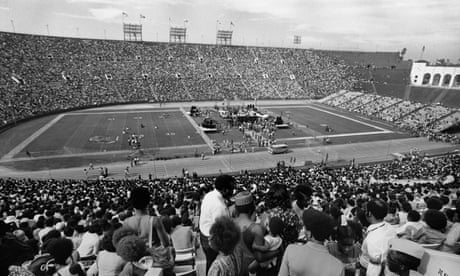
A new book from Columbia University professor Frank Andre Guridy examines the successful repurposing of the US sports stadium into a hub of American public life
Fifty-two years ago last month, 100,000 Black Angelenos gathered at the Los Angeles Memorial Coliseum. Although the historic stadium had long served as a venue for many of the city’s sports teams, that wasn’t the draw on 20 August 1972. Rather, it was Wattstax ‘72, a celebration of Black culture meant to channel positivity and pride in a community devastated by the Watts riots of 1965 and mourning the assassination of the Rev Dr Martin Luther King Jr in 1968.
The Rev Jesse Jackson was an emcee, touting co-sponsor Schlitz Brewing Company’s initiative for Black jobs and urging the audience that no matter how impoverished they were, they should remember the motto “I am Somebody”. The police were not asked to maintain order – the organizers managed things themselves. One member of the talented lineup of performing artists, “Prince of Dance” Rufus Thomas, led attendees in a spontaneous on-field rendition of the Funky Chicken. (Many of the stars, including Thomas, had ties to co-sponsor Stax Records.) Afterward, one crowd member disobeyed a request to get off the field – until Thomas persuaded spectators to act as an escort. Overall, it was a successful repurposing of a sports stadium into a public square – a phenomenon that Columbia University history and African American studies professor Frank Andre Guridy further explores in his new book, The Stadium: An American History of Politics, Protest, and Play.




